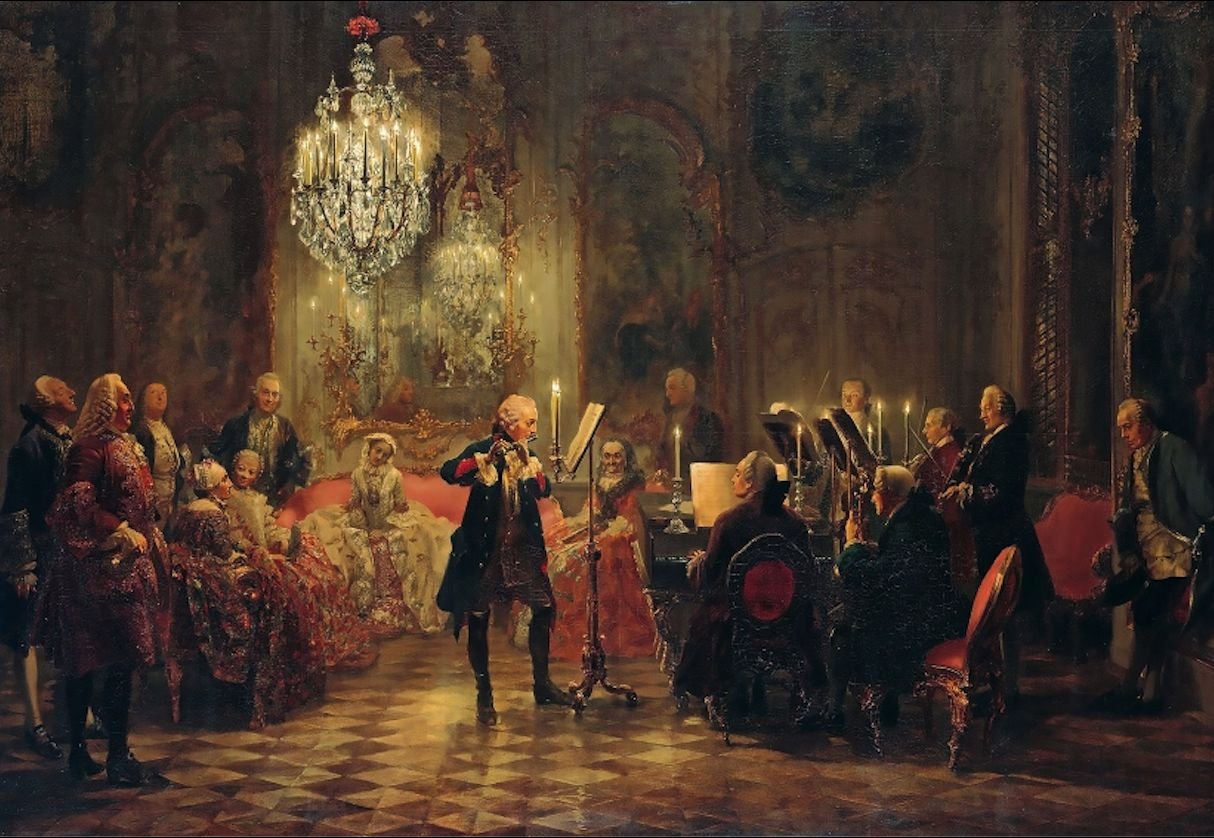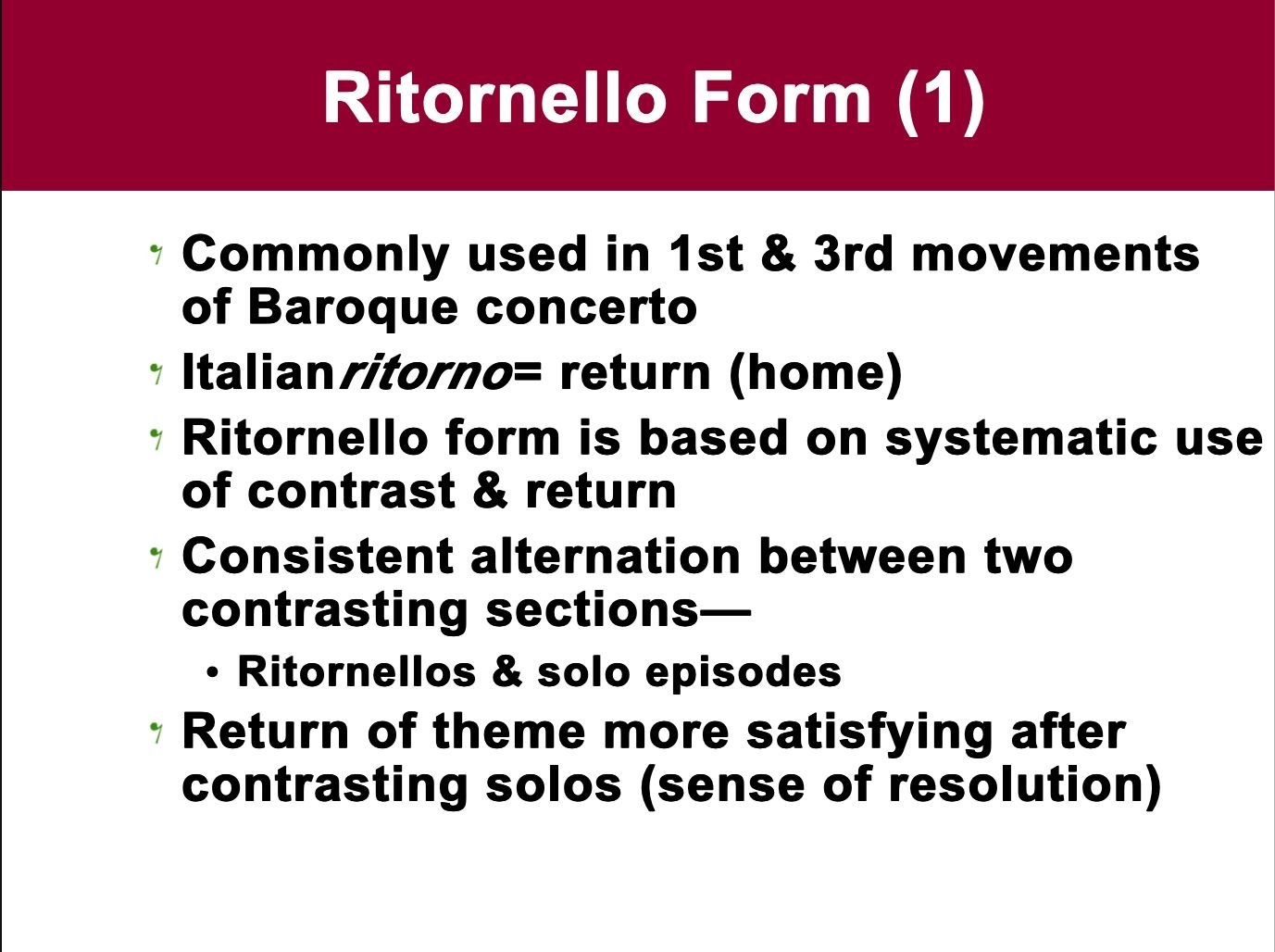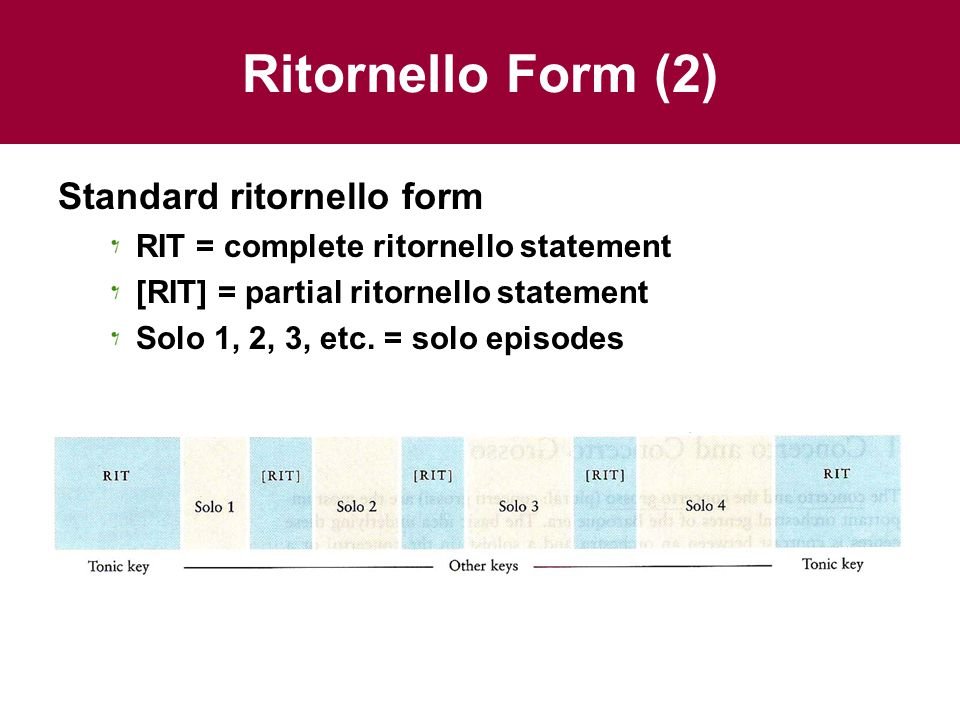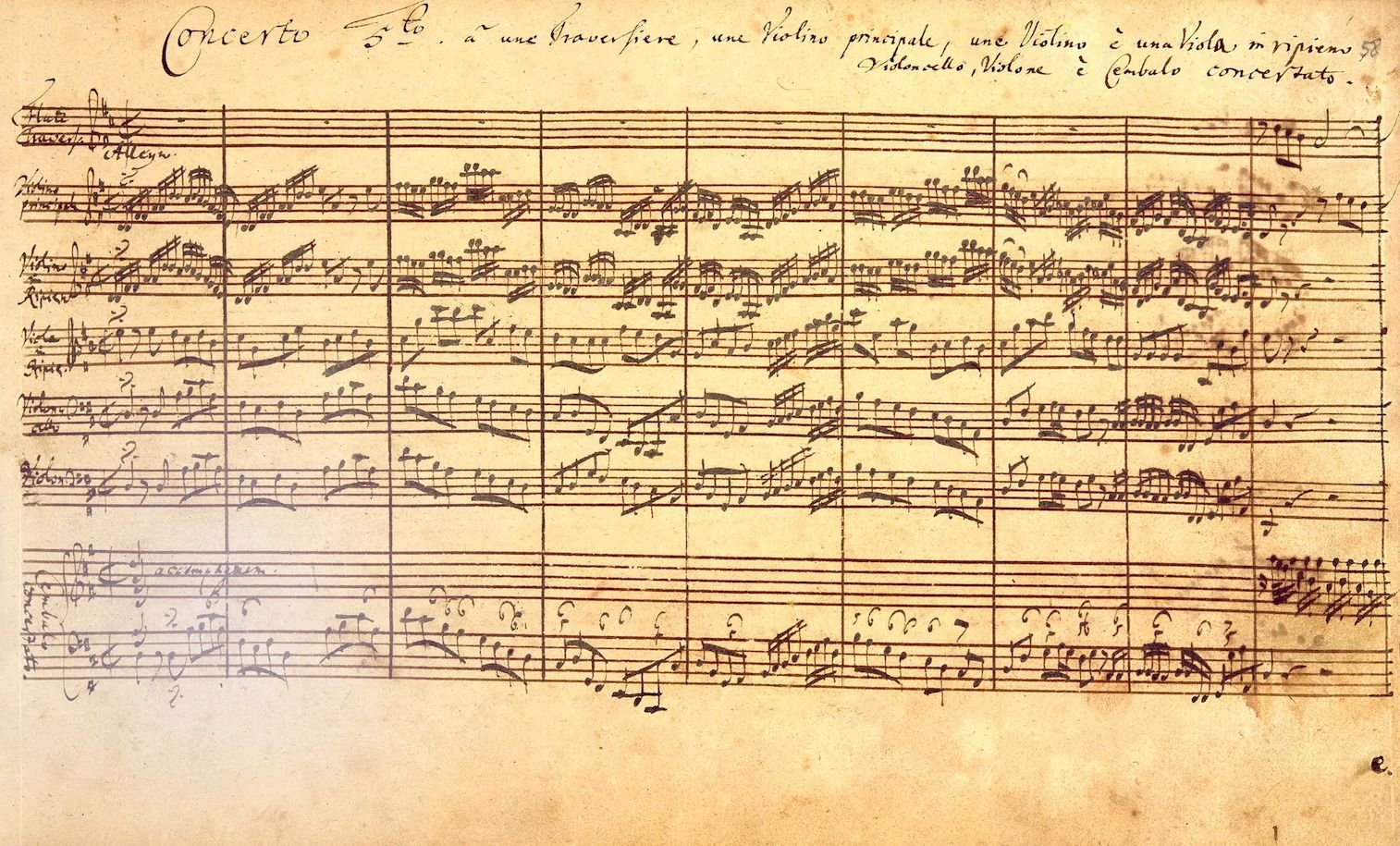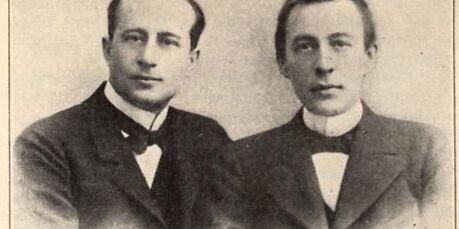【BON音樂】巴赫:布蘭登堡協奏第四號簡介
Introduction of Bach’s Brandenburg Concerto No.4
– 資訊整理共享於網路,一起欣賞音樂與藝術之美 –
蹦藝術 | BONART
→巴赫:布蘭登堡協奏曲 介紹網頁
巴赫:布蘭登堡協奏曲第四號
編制:主奏部:一把小提琴,兩把直笛。弦樂五部與(數字低音低音提琴)+大鍵琴。
布蘭登堡協奏曲封面欣賞
六首布蘭登堡協奏曲,六種風情
1721年,巴赫創作了六首大協奏曲,署名題獻給布蘭登堡的克里斯蒂安·路德維希侯爵(Christian Ludwig),標題為《六首不同樂器的協奏曲》。
克里斯蒂安·路德維希侯爵(Christian Ludwig):
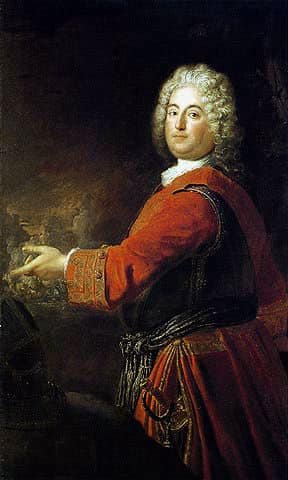
這六首《布蘭登堡協奏曲》,每首都有著各自不同的獨奏樂器,並具有當時器樂寫作盛行的「大協奏曲」(Concerto Grosso)形式,也就是具備「主奏部」(Concertino)與「樂團協奏部」(Tutti);音樂上則為「Ritornello」:即「Solo」與「Tutti」。
《布蘭登堡協奏曲》資料與獨奏樂器一覽:
| Concerto | Key | BWV | Solo |
|---|---|---|---|
| Brandenburg Concerto No. 1 | F major | 1046 |
|
| Brandenburg Concerto No. 2 | F major | 1047 |
|
| Brandenburg Concerto No. 3 | G major | 1048 |
|
| Brandenburg Concerto No. 4 | G major | 1049 |
|
| Brandenburg Concerto No. 5 | D major | 1050 |
|
| Brandenburg Concerto No. 6 | B-flat major | 1051 |
|
歷史知識篇
弦樂:弓的演進
巴洛克時期的提琴與弓
The Baroque violin and bow | Netherlands Bach Societ
維奧爾琴介紹
The viola da gamba | Netherlands Bach Society
巴洛克木長笛介紹
延伸閱讀
巴赫:無伴奏長笛組曲 BWV1013
Marten Root, Baroque flute
各種鍵盤樂器介紹
藝文誌 西洋古樂 鍵盤篇 Introducing Harpsichord and Pipe Organ (Cantonese, Chinese Subtitle) 粵語中字
Bach – Concerto in A minor BWV 1065 | Netherlands Bach Society
談早期的鍵盤協奏曲
在莫札特之前,早期鍵盤協奏曲作曲家以C.P.E. Bach為領導人物。
這幅知名的「無憂宮長笛音樂會」場景,由畫家阿道夫·馮·門澤爾(Adolph von Menzel)生動地畫出18世紀時,普魯士君王腓特烈二世(歷史上稱之為腓特烈大帝)在他名為「無憂宮」的音樂廳裡吹奏長笛的樣貌,坐在大鍵琴前演奏即為 C. P. E. 巴赫。作為音樂家,腓特烈大帝文功武治,功績顯赫,在音樂上亦非常有著墨:共創作了四首交響曲和約100首奏鳴曲。而在文學與藝術部分,除了和文學家伏爾泰經常有交流,也與許多當代著名哲學家和藝術家有聯繫。
而作曲家J.S. Bach、J.C. Bach、Soler、Wagenseil、Schobert、Johann Baptist Wanhal 而至海頓,皆有不同的鍵盤協奏曲問世。
例如巴赫的第五號布蘭登堡協奏曲,也存在著以鍵盤作為三件主要獨奏樂器之一(小提琴、長笛與鍵盤):
從當時所盛行的協奏曲作品,包括了器樂協奏曲與鍵盤協奏曲,皆有著管弦樂合奏和獨奏段落的交替,也若干程度地反映出巴洛克時期的歌劇傳統(樂器演奏/歌唱交替進行),稱之為「反始曲式」(Ritornello Form)
即便後來的莫札特鋼琴協奏曲的第一樂章,也喜愛使用「反始曲式」作為基本形式;在莫札特的小提琴協奏曲中,也可以看到相似的結構。
什麼是Ritornello Form?
巴洛克時期興起的器樂作曲手法
廣泛地使用於第一與第三樂章
以代稱進一步說明
樂段代稱:
| R–A1—R–A2—R | B | R–A1—R–A2—R ||
第五號布蘭登堡協奏曲手稿樂譜,樂曲開頭的「Ritornello」主旋律:
第五號布蘭登堡協奏曲(BWV 1050)「Soli 主奏樂器」是小提琴,長笛和大鍵琴,「Tutti 大團」是弦樂器與低音聲部。也是六首布蘭登堡協奏曲中,演奏長度最長的一首(總長約20-22分鐘)。
最值得觀察與欣賞之處,是除了高音兩聲部(長笛與小提琴)之外,大鍵琴在此曲中有著重要的地位,包括第一樂章就具有大鍵琴精彩的獨奏裝飾奏(Cadenza)。
以巴赫的第五號布蘭登堡協奏曲為例,介紹當時盛行的「Ritoenello Form」寫作方式:
Concerto Grosso (and Ritornello Form) Explained
第四號布蘭登堡協奏曲 曲式結構
第一樂章:G大調,3/8拍
曲式段落
| 段落(小節數) | 調性 | 補充 |
| Ritornello 1(1-83) | G大調、D 大調、C大調 | |
| 1-22 | G大調 and D 大調 | G major (tonic) to D major (dominant) |
| 22-56 | D 大調 to C大調 | D major to C major (subdominant), then to G major. |
| 57-83 | G大調 | Note the distinctive closing bars with cross-rhythms, circle of fifths progression and hemiola. |
| Episode 1(83-136) | ||
| 83-88 | C大調 | Violin solo attempts a move to subdominant (C major) |
| 89-102 | D 大調 | Tutti reinforces the tonic with ‘motto’ theme; violin tries subdominant again before moving towards dominant (D major). |
| 103-113 | Tutti reinforces the dominant with two playings of the ‘motto’. | |
| 113-124 | Violin solo continues to dwell on the dominant. | |
| 125-136 | C, D and G major | Flutes repeat motif from bar 35 over an A7 chord, rising through F#7 to B7 which becomes dominant preparation for… |
| Ritornello 2(137-157) | e小調 | Note that this is a shortened ritornello, consisting of just the opening and closing motifs. |
| Episode 2(157-208) | ||
| 157-165 | e小調 to G大調 | Flute duet with tutti accompaniment; E minor to G major. |
| 165-184 | b小調 to a小調 | Flute duet with continuo accompaniment; touching fleetingly on a number of keys, but chiefly B minor and A minor. |
| 185-208 | a小調 to C大調 | Starts as if a tutti ritornello in A minor, but quickly becomes a virtuoso violin solo heard over the ritornello material. The music moves from A minor to C major. |
| Ritornello 3(209-235) | C大調 | C major characterised by violinist’s double stopping in parallel 6ths. Like the second ritornello, this is ‘abbreviated’ to just the opening and closing motifs. |
| Episode 3(235-322) | C大調 | |
| 235-240 | C大調 | 3 part stretto canon at the unison over a tonic (C) pedal. |
| 241-243 | C大調 | ‘Motto’ theme in C (tutti). |
| 243-248 | Violin solo (material similar to Episode 1). | |
| 249-251 | G大調 | ‘Motto’ theme in G (tutti). |
| 251-257 | G大調 | 3 part stretto canon at the unison over a tonic (G) pedal. |
| 257-263 | Violin solo (material similar to Episode 1). | |
| 263-287 | C, D and G大調 | A reworking of bars 35-56 from the opening ritornello, here moving from D to C, then G. |
| 288-310 | e小調、a小調、b小調 | A reworking of bars 157-184 from the second episode, touching on E minor, A minor and B minor. |
| 311-322 | A reworking of bars 125-136 over E7, C#7 and F#7 |
| Ritornello 4 | ||
| 323-344 | b小大調 | B minor (almost identical to 2nd ritornello but with instrumentation switched – ripieno violins now taking some of the melodic material). |
| Ritornello 5 | ||
| 345-427 | G大調 | An exact repeat of the opening ritornello in G. |
單一性
由於巴洛克音樂樂章多具備強烈的性格單一性,一旦樂曲個性被決定,就不易再更動;因此,好好地認識「第一次Ritornello」,是欣賞本樂章之最重要關鍵。
完整樂譜欣賞
音樂演奏欣賞
補充資料
柯賴里:大協奏曲集
開卷蹦藝術.享受美好閱讀時光
☕️一杯咖啡.一點心意.支持蹦藝術☕️
各類合作提案,聯繫方式:
*手機:0917.670.518
*Line:https://line.me/ti/p/LB1ro0P0AU
*E-mail:jenpin888@gmail.com
更多音樂新知
2024-07-25
【BON音樂】蹦藝術X大人社團 -浪漫巨人-拉赫曼尼諾夫的鋼琴協奏之旅(二)第一號鋼琴協奏曲與前奏曲
這堂課林仁斌老師將以拉赫曼尼諾夫完成於1892年,修改於1917年的第一號鋼琴協
2024-07-18
【BON音樂】蹦藝術X大人社團 -浪漫巨人-拉赫曼尼諾夫的鋼琴協奏之旅(一)立足現代,心在浪漫的音樂巨人:拉赫曼尼諾夫的生平
拉赫曼尼諾夫身兼作曲家、鋼琴家與指揮家,集所有音樂才華於一身,是公認全方位的音樂
2024-07-11
【BON音樂】蹦藝術X上海商業儲蓄銀行「豐富人生 X 音樂天地」公益講座:獵劇本高手、獵旋律高手、獵豔高手」:普契尼生平與他的音樂
在全世界十大上演率最高歌劇裡,普契尼就佔了三齣。他筆下細膩的愛情與詠嘆,流淌下無

